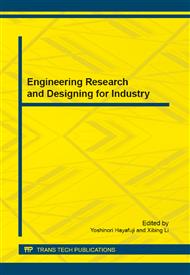[1]
J. Rydlova and J. Fetter, Steam and Feedwater Piping Assessment outside the Containment at Metsamor NPP, ASME 2011 Pressure Vessels and Piping Conference, Vol. 3, 2011, pp.187-192.
DOI: 10.1115/pvp2011-57360
Google Scholar
[2]
European Standard EN 1998-1 Design of Structures for Earthquake Resistance, pp.1-1.
Google Scholar
[3]
E. Popov and M. Engelhart Seismic eccentrically braced frames, Journal of Constructional Steel Research, Vol. 10, No. C, 1988, pp.321-354.
DOI: 10.1016/0143-974x(88)90034-x
Google Scholar
[4]
P. Dusicka, A. M. Itani and I. G. Buckle, Cyclic behavior of shear links of various grades of plate steel, Journal of Structural Engineering, Vol. 136, No. 4, 2010, pp.370-378.
DOI: 10.1061/(asce)st.1943-541x.0000131
Google Scholar
[5]
Á. Zsarnóczay, V. Budaházy, L. G. Vigh and L. Dunai, Cyclic hardening criteria in EN 15129 for steel dissipative braces, Journal of Constructional Steel Research, Vol. 83, 2013, pp.1-9.
DOI: 10.1016/j.jcsr.2012.12.013
Google Scholar
[6]
J. Melcher, Z. Kala, M. Holický, M. Fajkus and L. Rozlívka, Design characteristics of structural steels based on statistical analysis of metallurgical products, Journal of Constructional Steel Research, Vol. 60, No. 3-5, 2004, pp.795-808.
DOI: 10.1016/s0143-974x(03)00144-5
Google Scholar
[7]
Z. Cada, J. Kala, V. Salajka and V. Kanicky, The Probabilistic Approach to Modification of Seismic Linear Response Spectra, Lecture Notes in Electrical Engineering, Vol. 141, 2012, pp.365-371.
Google Scholar
[8]
J. Kralik, Deterministic and Probabilistic Analysis of Steel Bracing System Efficiency, Applied Mechanics and Materials, Vol. 390, 2013, pp.172-177.
DOI: 10.4028/www.scientific.net/amm.390.172
Google Scholar
[9]
L. Pecinka, M. Svrcek, P. Zeman and K. H. Reinsch, Application of simulation based reliability analysis on the dimensioning of viscous dampers GERB, ASME 2009 Pressure Vessels and Piping Conference, Vol. 8, 2010, pp.349-353.
DOI: 10.1115/pvp2009-77301
Google Scholar
[10]
P. Stemberk and J. Kruis, Fuzzy Dynamic Structural Analysis of Two-dimensional frame, Structural Engineering and Mechanics, Vol. 25, No. 2, 2007, pp.147-160.
DOI: 10.12989/sem.2007.25.2.147
Google Scholar
[11]
J. Naprstek and O. Fischer, Non-stationary Random Seismic Response Solved Using Generalized Correlation Method, Advances in Earthquake Engineering, Vol. 2, 1996, pp.269-278.
Google Scholar


